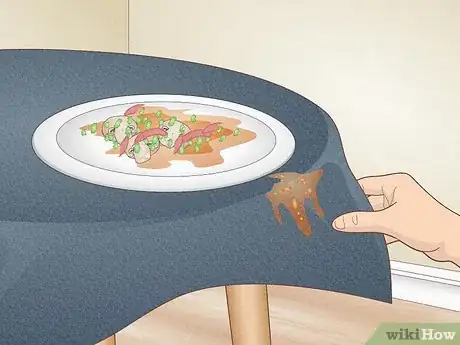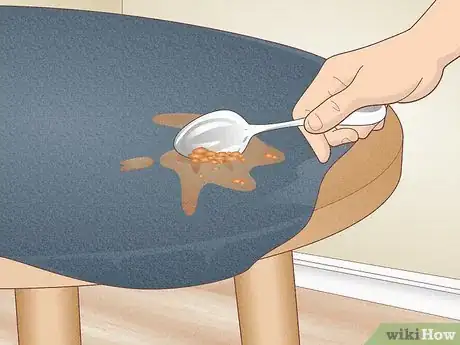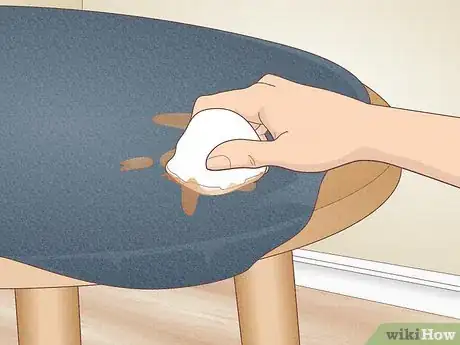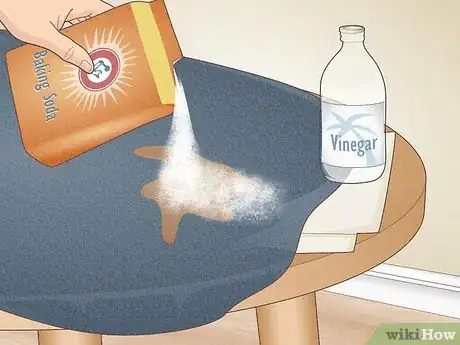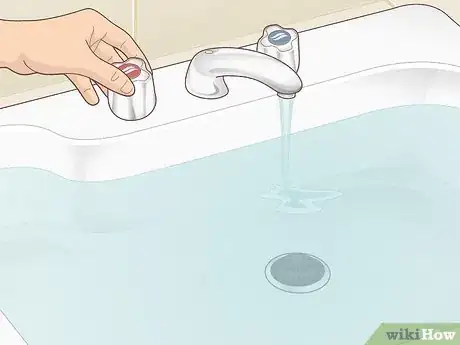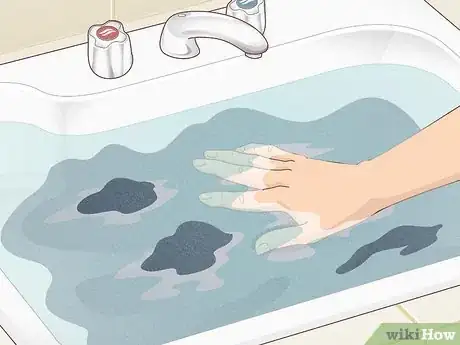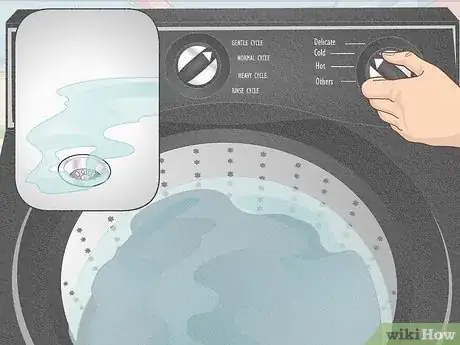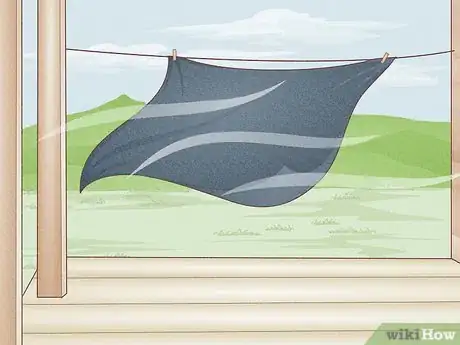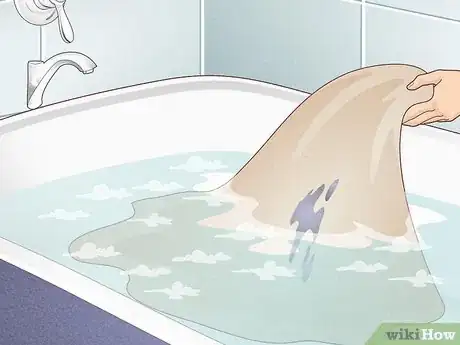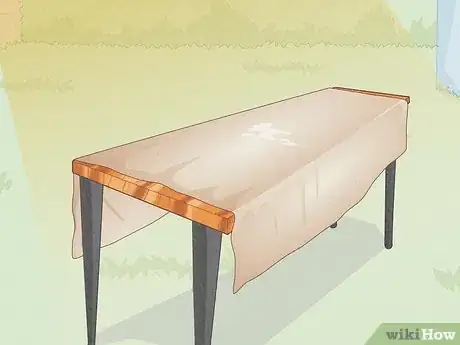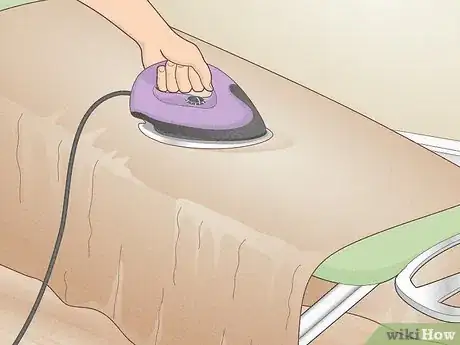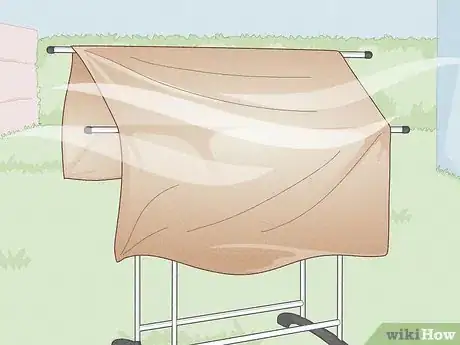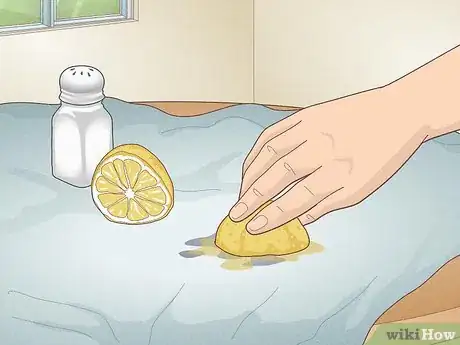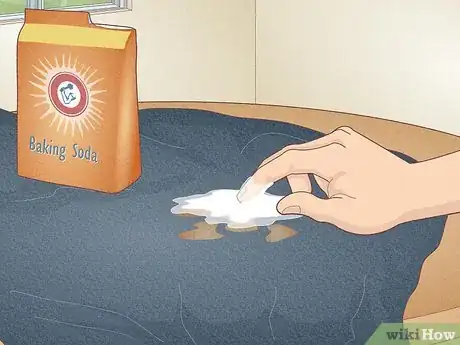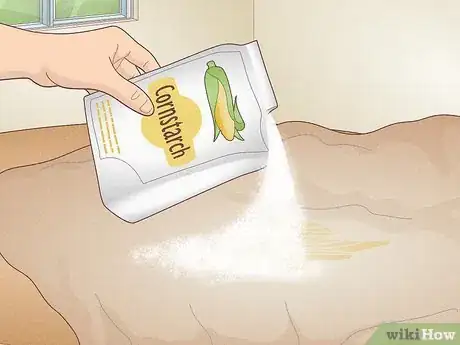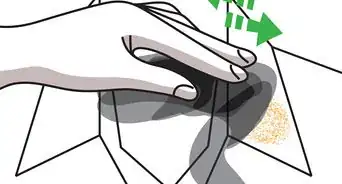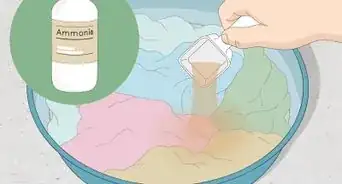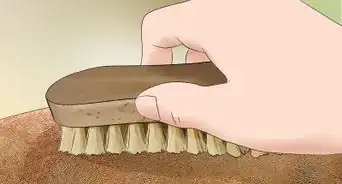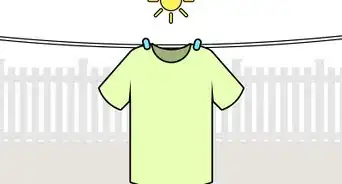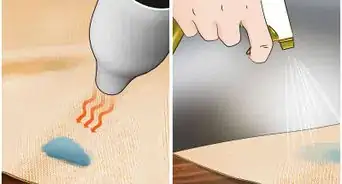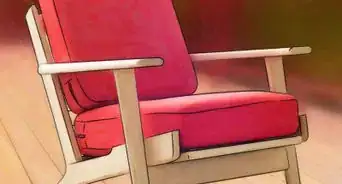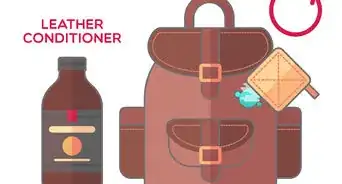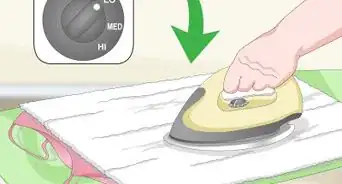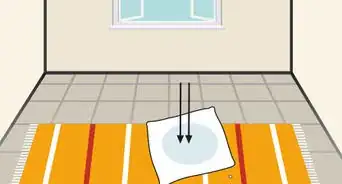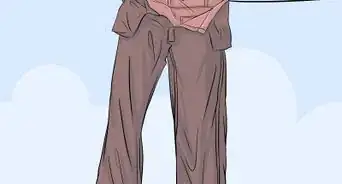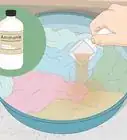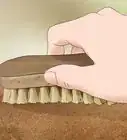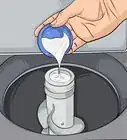This article was co-authored by Elias Weston. Elias Weston is a Cleaning Specialist and the Founder of Seatown Cleaners in Seattle, Washington. Elias specializes in helping clients find cleaning services with instant booking and flexible pricing. Seatown Cleaners offers standard, deep, and move-in/out cleaning services using green products and cleaning techniques. Every cleaner is thoroughly vetted and every cleaning is backed by a 100% money-back guarantee.
There are 8 references cited in this article, which can be found at the bottom of the page.
This article has been viewed 160,052 times.
Linen is a delicate fabric with fibers that can become easily damaged by stains. Special care is required to remove stains from linen so that the table cloth, fancy napkins, summer dress, or whatever you're trying to clean is not damaged. Stain removal is a simple process that will keep your linens looking clean and new.
Steps
Removing New Stains
-
1Act quickly to clean the stain. The longer a stain is allowed to sit on your nice tablecloth or summer dress, the harder it will be to get out. Whether a stain is from food or ink or anything else, drawing it out from linens will work best when it hasn't yet dried.[1]
- Some older stains require dry cleaning to be removed.
- Dry cleaning can ruin linens so it’s imperative that you try and treat stains quickly so that you don’t have to resort to harsher methods to remove the stain.
-
2Scrape off excess liquid or solids. Use a flat butter knife or spoon to gently lift off any residue. For example, jelly can be scooped up with a spoon so that there’s less of a mess to clean up. You want to remove as much of the substance as possible before beginning to treat the stain.[2]
- Do not squeeze or press the linen or stain. Doing so may grind the stain substance into the fibers of the linen and make it harder to get out.
- You can gently shake off residual liquids like wine or juice instead of wringing them out.
Advertisement -
3Blot the stain with a white cloth or towel. Gently dab up and down with a paper towel, for example, to lift the stain from your linens to the towel. Work from the outside of the stain’s perimeter to the inside. This will prevent the pressure of blotting from spreading the stain.[3]
-
4Apply a chemical solution to the stain. For best results, use a specific product for removing stains rather than regular soap. A chemical reaction is an efficient way of removing stains from your linens. Lay out your linen and place a few paper towels or rag clothes underneath to catch excess liquid.
- Sprinkle baking soda on the stain and add a few drops at a time of vinegar. Blot the stain with a paper towel to soak up the moisture.
- Lemon juice will help whiten any dingy materials. Squeeze some juice onto a stain or discolored linen item and let it sit until you see it begin to lighten, and then rinse it out.
- You can also buy a stain treatment to apply to the stain like Tide or Oxyclean.
- Don't even rub a stain. Rubbing and applying too much pressure will help a stain to set into the linen rather than get it out.
-
5Fill a sink with hot water. Let the faucet run long enough to fill a sink, bathtub, or washing machine with enough water to cover the linens you’re washing. Hot water should only be used with an additive to help lift the stain. Heat makes stains settle into the fabric so make sure you’re adding another ingredient to the water.[4]
-
6Add another cleanser to the water. Because hot water alone is detrimental to proper stain removal, you need to pair it with another cleanser. You can either purchase a specific stain removal product or make your own with household items.
- An example stain removing recipe is as follows: 1 scoop of Oxyclean, 1 cup of Biz, ¾ cup of ammonia, and a gallon of hot water.[5]
- White vinegar will help to cut grease as well. Use an ⅛ to a ½ cup based on how big your load of laundry is.[6]
- A mild dish detergent will work well too. Use a quarter to a full cup of detergent depending on how much you’re washing. [7]
-
7Submerge your linen items in the sink. Make sure the fabric is completely saturated and under water. Let the material soak for at least an hour or overnight. Every once in a while, stir the water with a wooden spoon to agitate the water and make sure the solution is dispersed well.
-
8Drain the sink and wash your linen items normally. Put them on a gentle cycle in the washing machine and not in hot water so that the delicate fibers aren’t ruined.[8] You can add more white vinegar, Oxyclean, or mild dish detergent to the load to help fight stubborn stains.
-
9Hang to dry. Your dryer is another heat source that could cause a stain to set into the linen. Instead, air or line dry the fabrics so that you don’t undo your progress after soaking them. Hanging linens to dry also helps minimize wrinkles.
Treating Old Stains
-
1Soak the linen item in a hot water bath with a stain treatment additive. Before going to any additional methods, try removing a stain the same way you would with a new stain. You may be able to get rid of the stain by simply soaking the fabric and then machine or hand washing it. If linen items are stored improperly or are put away with existing stains, it may be more difficult to remove the stains.
- Fill up a bathtub or sink with cool water for soaking. Hot water needs an added cleanser to prevent stains from setting.
- Every once in a while, check on the stain to see if it is being absorbed into the water.
- To test the stain, lightly rub the material between your fingers to see if it's coming out. Be gentle so that you don't rub the stain into the fabric.
-
2Lay out the linen items in the sun. If the stains persist through multiple soakings and washing, let the fabric sit in the sun for a few hours. Sunlight can also damage fabric and bleach too much, so it’s important to keep an eye out if your fabric begins to look too light. Remove your linens from the sun if they begin to fade beyond the original color.
- You can put the linens out completely dry, or you can lightly mist them with a spray bottle filled with water, non-chlorine bleach, or any other liquid stain remover.[9]
- Do not soak the fabric if you’re leaving it in the sun. It may create an unpleasant odor.
- Vintage fabrics may become damaged from direct sunlight so use caution when deciding whether or not to put antiques in sunlight.
-
3Press older linen items by ironing immediately after washing to preserve them. It’s best to iron linen while it’s slightly damp. Once you have successfully removed a stain, you can safely apply heat to any of your linen items. Use the proper setting on your iron so that you don't cause any damage. By pressing fabric, it is then easier to store and less susceptible to damage and wrinkling.
- Ironing a stain is a perfect way to seal the stain into the fibers.
- Check your whole garment or fabric to make sure that there are no other hidden stains.
-
4Hang dry the linen if ironing is not needed. No matter the age of a stain, putting linens that have been rescued from stains in the dryer is not advised. Use a drying rack, clothesline with clothespins, or a clothes rack to air out your linens.
Using Household Items to Treat Stains
-
1Dab fresh lemon juice onto a new stain. Apply fresh lemon juice to the stain and sprinkle salt over top. Let the linens sit in the sun for several hours before washing. Check on it periodically to make sure the stain is beginning to fade. If it is not, add more juice and salt. [10]
- Be careful on bright, sunny days because the sun could lighten your linen items very quickly. Set a timer to check on the progress so that you don't end up with splotchy fabric.
- For difficult stains, repeat this process several times. Wash the fabric in between repetitions.
- For large stains or dingy white tablecloths for example, combine lemon juice and dissolved salt in a spray bottle and lightly spray the whole thing. Let it sit in the sun laid out flat so that the effect is uniform.
-
2Absorb new stains with a baking soda mixture. Make a baking soda paste with 4 tablespoons (59.1 ml) of baking soda mixed with equal amounts water. Mix and apply gently so you don't rub the paste into the stain. After the paste has dried and sat for about 15 to 30 minutes, scrape off any excess paste before washing the linens normally.[11]
-
3Treat oil stains with cornstarch. Oils stains are some of the most difficult to get out of fabrics. Sprinkle cornstarch on the stain and waiting 15 minutes for it to set. Then, scrape the starch off. Wash the linens in a sink bath with some dish washing soap or in the washing machine at a gentle cycle.[12]
- Don't coat the stain in too much cornstarch. You only need a small coating to absorb the stain. You can reapply another coat after the first one if the stain persists.
- If you need to rinse the cornstarch out, use cool water to keep the stain from sticking around.
Community Q&A
-
QuestionHow do l remove a foundation stain from linen?
 Community AnswerApply a baking soda, hydrogen peroxide, and vinegar solution to the foundation spot and scrub the area with a toothbrush. Let it sit for 24 hours, then wash the linen as usual in the washing machine.
Community AnswerApply a baking soda, hydrogen peroxide, and vinegar solution to the foundation spot and scrub the area with a toothbrush. Let it sit for 24 hours, then wash the linen as usual in the washing machine. -
QuestionA linen jacquard table cloth has stains I found after being dry cleaned and stored for several years. I don't know if it was a water stain, or tea or coffee. Can it be removed?
 Community AnswerYes, it should be able to be cleaned with following the steps in this article. Follow the second part of the article about treating old stains.
Community AnswerYes, it should be able to be cleaned with following the steps in this article. Follow the second part of the article about treating old stains. -
QuestionI have linen curtains that have a water stain. I had them dry cleaned and the stain is still there help!
 Community AnswerSometimes a stain can come out just by soaking or letting it fade, depending on the stain and the material. Check to see if your curtains can get wet, and try soaking them in a warm bath in the tub or a sink with a cup of white vinegar. Rinse it out and try again if the stain persists.
Community AnswerSometimes a stain can come out just by soaking or letting it fade, depending on the stain and the material. Check to see if your curtains can get wet, and try soaking them in a warm bath in the tub or a sink with a cup of white vinegar. Rinse it out and try again if the stain persists.
Things You'll Need
- Sink full of hot water
- A drying rack or clothesline
- Bicarbonate of soda (baking soda)
- Lemon juice and salt
- Oxyclean, Biz, or dish detergent
References
- ↑ Elias Weston. Cleaning Specialist. Expert Interview. 30 January 2021.
- ↑ http://www.cleaninginstitute.org/clean_living/stain_removal_chart.aspx
- ↑ http://www.marthastewart.com/275491/how-to-wash-and-remove-stains#234649
- ↑ http://www.realsimple.com/home-organizing/cleaning/cleaning-stain-removal/stained-dress
- ↑ http://www.cleaninginstitute.org/clean_living/stain_removal_chart.aspx
- ↑ http://www.marthastewart.com/275491/how-to-wash-and-remove-stains#222741
- ↑ http://www.huffingtonpost.com/2014/11/21/cleaning-table-linens_n_6186274.html
- ↑ Elias Weston. Cleaning Specialist. Expert Interview. 30 January 2021.
- ↑ http://www.antique-linens.com/laundryTips.html
About This Article
If you want to remove a spot from linen, try using baking soda and vinegar. First, dab the stain using a white paper towel to remove excess fluid. Work from the outside edge of the stain so you don't spread the spot. Once you’ve removed as much of the spot as you can, cover the area in baking soda and add a few drops of vinegar. Then, dab the liquid with a new paper towel to remove the remaining parts of the stain. Another way you can remove a spot from linen is using lemon juice. Just squeeze some lemon juice onto the spot and let it sit until it begins to lighten. Rinse the juice off with water. Remember never to rub a stain on linen, since this will make it set into the fabric. For tips on how to remove old spots by using stain treatment additives, read on!
